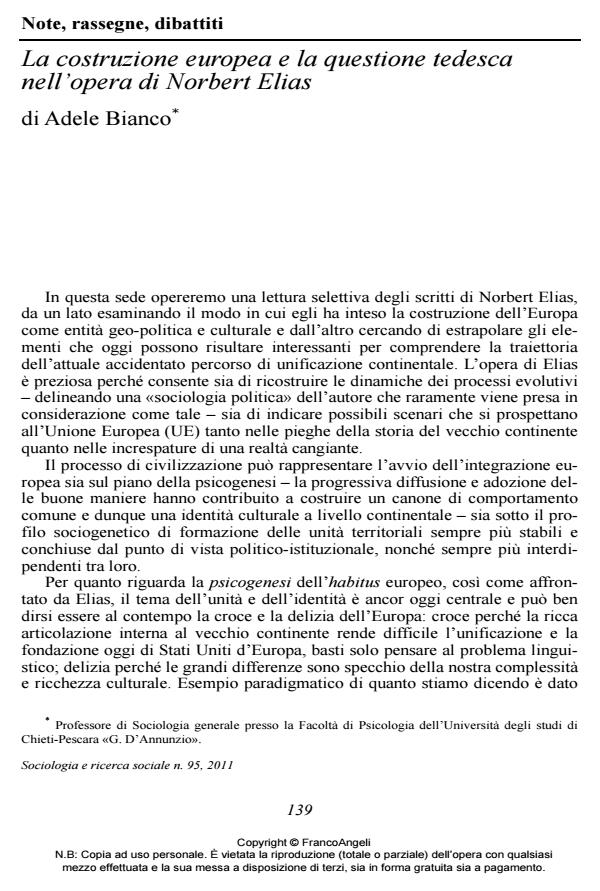La costruzione europea e la questione tedesca nell’opera di Norbert Elias
Titolo Rivista SOCIOLOGIA E RICERCA SOCIALE
Autori/Curatori Adele Bianco
Anno di pubblicazione 2012 Fascicolo 2011/95 Lingua Italiano
Numero pagine 16 P. 139-154 Dimensione file 233 KB
DOI 10.3280/SR2011-095007
Il DOI è il codice a barre della proprietà intellettuale: per saperne di più
clicca qui
Qui sotto puoi vedere in anteprima la prima pagina di questo articolo.
Se questo articolo ti interessa, lo puoi acquistare (e scaricare in formato pdf) seguendo le facili indicazioni per acquistare il download credit. Acquista Download Credits per scaricare questo Articolo in formato PDF

FrancoAngeli è membro della Publishers International Linking Association, Inc (PILA)associazione indipendente e non profit per facilitare (attraverso i servizi tecnologici implementati da CrossRef.org) l’accesso degli studiosi ai contenuti digitali nelle pubblicazioni professionali e scientifiche
In reviewing the work of Norbert Elias, this essay on one hand examines the way he represented building Europe as a geo-political and cultural entity, and on the other extracts elements that may help understand the present evolution of the European structure. According to Elias, building Europe was a social phenomenon that, psychologically, conformed and minimized national differences creating a European cultural identity; sociologically, the territorial matters and political-institutional conformations of the European continent became particularly relevant. In this context, Germany’s position appears to be continuously defined: in the past, as a historic and political entity. Today and for the future of Europe, is it in terms of an economic, financial and productive center, as attested by the debate regarding the future of the Euro and the European Union, that has been ongoing since the economic crisis started in 2007.;
Adele Bianco, La costruzione europea e la questione tedesca nell’opera di Norbert Elias in "SOCIOLOGIA E RICERCA SOCIALE " 95/2011, pp 139-154, DOI: 10.3280/SR2011-095007